Vegetable Lists
-
Techniques for raising seedlings of Spring sowing Pepper
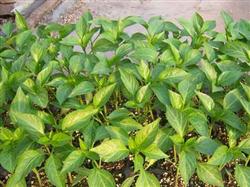
(1) the sunny beds are going to choose plots where the land is fertile, leeward and sunny, and there are no eggplant or tomatoes planted in the previous crop to build sunny beds. For every mu of planting, seedlings should be raised according to 150 grams of seeds, and the sunny border should be more than 10 square meters. Apply sufficient base fertilizer, make soil moisture by flood, and use a small amount of urea, phosphate fertilizer and active potash fertilizer. Because of the sunny border.
2018-09-12 -
The effect of topdressing Chinese cabbage is good according to the growing period.
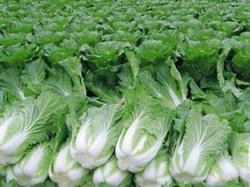
Chinese cabbage has a high yield and needs a large amount of fertilizer. On the basis of applying sufficient base fertilizer, don't worry about topdressing. Topdressing should be determined according to different growth periods and seedling conditions. There is no topdressing in the seedling stage. If the bottom fertilizer is insufficient, you can apply 10 kg ammonium sulfate per mu at the stage of 3 to 4 true leaves for the first time, sprinkle it on both sides of the seedling and water it immediately.
2018-09-12 -
Four cultivation models based on spring radish and pepper
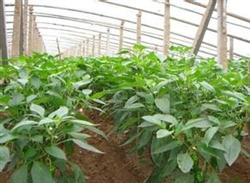
Pepper in winter and spring is the most important crop in the cultivation of pepper in solar greenhouse at present. It is generally planted in mid-November and can be harvested and listed in the first ten days of January of the following year until the summer of the following year. The main cultivation techniques are explained as follows: 1. The construction of a new type of energy-saving solar greenhouse, to the structure and ring of the original solar greenhouse.
2018-09-12 -
Guiding Opinions on Scientific Fertilization of Pepper in Spring
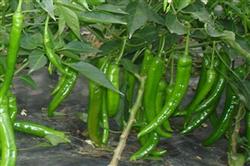
The essence of selecting fine varieties for cultivation in winter and spring is early maturity cultivation, attention must be paid to early maturity of varieties, giving consideration to high yield and disease resistance. Suitable varieties are red Yingda, Andalai, Holy Ark, in addition to Bulgarian pepper, Su pepper No. 5 and so on. Soil preparation and fertilization 10000 kg of high-quality manure or compost per mu, furrow urea...
2018-09-12 -
High-yield cultivation techniques of Capsicum in Spring, Summer and Autumn in greenhouse
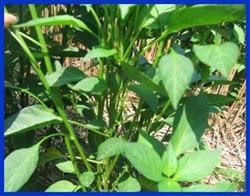
At present, the main problems in production are mainly production in early spring, less production in autumn after removal of plastic film in summer, listing of vegetables in open field after summer, relaxed management, and low yield of pepper in the later stage. In order to maximize the production role of greenhouse facilities, the author guides the masses to carry out a big stubble planting in spring, summer and autumn.
2018-09-12 -
Three points for attention in the Management of Chinese Cabbage
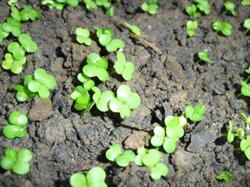
Indoor nursery. The whole growth period takes 90 to 100 days, of which the seedling stage is 30 days. The temperature required in the seedling stage is between 15 ℃ and 28 ℃, and geothermal heating facilities are needed to raise seedlings in early February. Seedling utensils can be used in low-barrel or plastic bowls, or nutritional prescriptions can be drawn. Keep the sowing spacing at 8 cm and sow 2 to 3 grains per bowl or hole.
2018-09-11 -
Seed selection and cultivation techniques of Chinese Cabbage
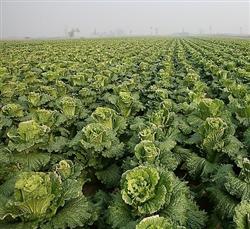
Chinese cabbage is a leafy vegetable with a large number of leaves and forming leaf balls. Is the main harvesting organ. Generally, it can reach 4000-5000 kg per mu. Chinese cabbage has a long growth period. In order to achieve high yield, it is necessary to master several key technologies: one. Apply sufficient base fertilizer: base fertilizer is the basis for a bumper harvest of Chinese cabbage. It's an old dish.
2018-09-11 -
Cultivation techniques of Chinese Cabbage in Spring
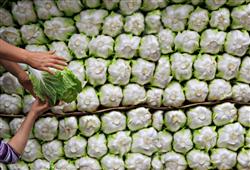
Spring Chinese cabbage, summer Chinese cabbage and early spring Chinese cabbage have no strict harvest time, and can be harvested after heading. The harvest time of autumn and winter Chinese cabbage is strict and must be harvested before the low temperature of-2 degrees Celsius appears. After the storage of Chinese cabbage is harvested, the leaf ball is facing north and the root facing south for 2-3 days. Then pile the plants in two rows.
2018-09-11 -
Control measures of yellow leaf disease (shedding disease) of Chinese cabbage
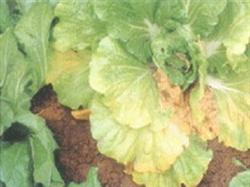
Chinese cabbage yellow leaf disease is a general term for fungal yellow leaf disease of Chinese cabbage. Chinese cabbage, yellow bud white and other Chinese cabbage, pakchoi and yellow leaf disease occur from north to south. The disease occurred in the seedling stage. The harmful fungus mustard is Fusarium oxysporum, which belongs to the subphylum of semisciferous bacteria. The disease can be sprayed or in the field.
2018-09-11 -
Technical measures for Disease Control of Chinese Cabbage
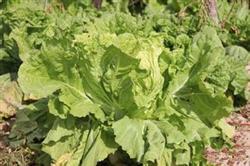
Downy mildew, virus disease, soft rot and dry burning heart disease are the main diseases of Chinese cabbage. The main results are as follows: 1. Downy mildew can occur from seedling stage to pericardial stage, mainly harming Chinese cabbage leaves. At first, the disease begins from the lower leaves, producing water-immersed, yellowish polyhedral spots on the leaves, and gradually enlarged and turned into yellowish brown.
2018-09-11 -
Out-of-season cabbage planting skillfully
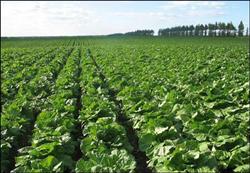
1. Spraying rice vinegar: from the rosette stage to the heading stage of Chinese cabbage, 300 times 500 times rice vinegar was sprayed every 7 to 10 days, 2 times for 3 times, and the yield could be increased by 15% and 30%. two。 Spraying rare earth: 0.03%, 0.05% and 0.08% rare earth nitrate solution was sprayed in rosette stage, heading stage and pericardium stage respectively for 3 times.
2018-09-11 -
How to apply fertilizer to Chinese cabbage
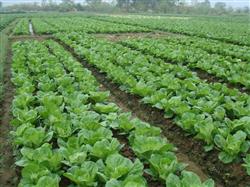
Chinese cabbage can be directly seeded or transplanted, and it is generally cultivated by direct seeding. If transplanting seedlings, fertilization in seedling bed is very important to cultivate strong seedlings. The standard of nursery bed fertilization is to plant a seedbed for one mu of field (about 35 square meters) with fully mature barnyard manure 200ml 250kg or ammonium sulfate 1-1.5.
2018-09-11 -
Management measures of rosette stage of Chinese Cabbage
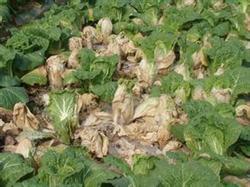
Symptoms: it occurs everywhere, and it can be harmful in the field and during storage. Most of the disease occurred from the base of the vegetable side, extending to the whole leaf to the whole Chinese cabbage. The disease part rotted, and white cotton-like mycelium and black sclerotia grew on the surface. Seed collection plant multi-stem disease, the stalk initially light brown, sunken, and then turned white, cortical rot.
2018-09-11 -
Key points of fertilization techniques for autumn sowing Chinese cabbage
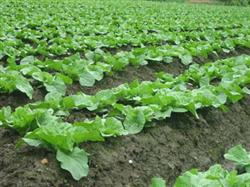
Chinese cabbage is also known as heading Chinese cabbage and yellow bud white. It originated in our country. China is also rich in variety resources. Its per unit yield is high, with a general yield of 3500 Murray 4000 kg per mu and a high yield of more than 5000 kg. 1. Botanical characteristics: the root system of Chinese cabbage is well developed, and the radicle can form a fleshy taproot. The main root is slender.
2018-09-11 -
Which fungicides can control root rot of Chinese cabbage
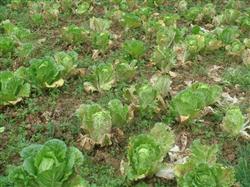
The cause of downy mildew of Chinese cabbage is fungal disease, which is mainly caused by leaves, and stems and flowers can also be damaged. After being infected, the front of the leaf produces watery chlorotic spots, and then develops into yellowish brown, which is polygonal due to the limitation of leaf veins due to the enlargement of the disease spot. When the weather is wet, there is a white sparse mildew layer on the back of the leaves.
2018-09-11 -
Notes on the use of drugs for prevention and treatment of root swelling of Chinese cabbage
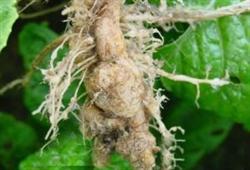
Chinese cabbage root swelling disease refers to the formation of tumors of different sizes and shapes in the root of Chinese cabbage. The tumor is smooth in the early stage, cracked and rough in the later stage, and is easy to infect bacteria after cracking. Root swelling not only harms cabbage, but also a variety of cruciferous crops. Root swelling disease can be damaged in the seedling stage of Chinese cabbage and die when it is serious. The disease.
2018-09-11 -
Notes on the use of drugs for the Prevention and treatment of virus Diseases in Chinese Cabbage
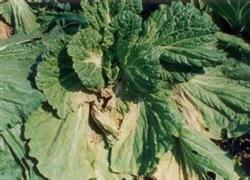
Agricultural prevention and control 1. Select disease-resistant varieties and avoid continuous cropping. Planting experience has proved that the general varieties of Qingbang Qingye line are relatively disease-resistant. Different from other cruciferous crops close neighbors, not continuous cropping with cruciferous crops, can effectively avoid the occurrence and spread of diseases; 2. Suitable time for late sowing, covering and cooling. According to planting experience, appropriate.
2018-09-11 -
How to prevent maggots from autumn cabbage
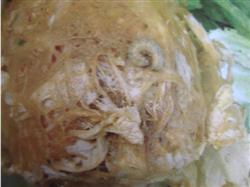
Autumn cabbage in the growth process, the most avoid ground maggots (also known as root maggots), it bites on the root epidermis of Chinese cabbage, causing germs in the soil to take advantage of it, causing Chinese cabbage to rot, which not only reduces the yield of Chinese cabbage, but also affects the edible value of Chinese cabbage. If do not prevent and cure in time, can make whole field suffer, cause serious to vegetable farmer.
2018-09-11 -
Early preparation for disease prevention of autumn Chinese cabbage
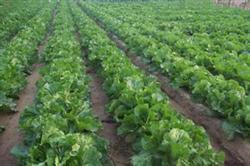
As the saying goes: head-volt radish, two-volt mustard, stand autumn plant cabbage. Now it is time to plant autumn Chinese cabbage again. We should plant autumn Chinese cabbage in time to ensure high quality and high yield. Now the key points of cultivation techniques of autumn Chinese cabbage are introduced as follows: select varieties with good fertilizer and water conditions, select tall, late and medium-maturing varieties; fertilizer.
2018-09-11 -
What about the eggplant falling from the greenhouse
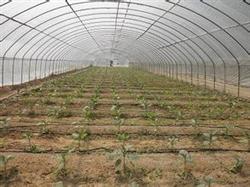
There are many reasons for eggplant falling flowers, such as excessive vegetative growth, weak plant growth, too dry or too high humidity, high temperature or lack of light. Prevention and control measures of vegetative growth: squatting seedlings at the right time, properly controlling water and fertilizer in squatting stage, and ploughing and loosening soil.
2018-09-11
